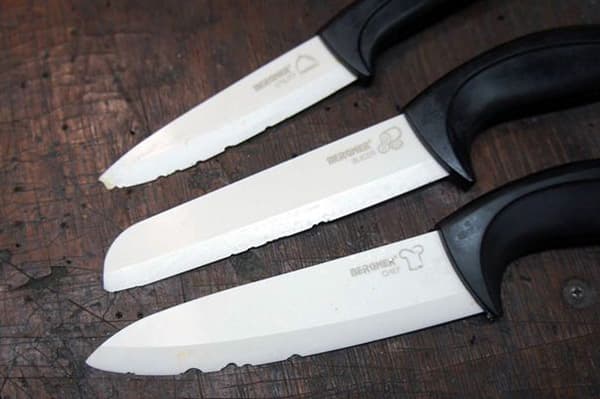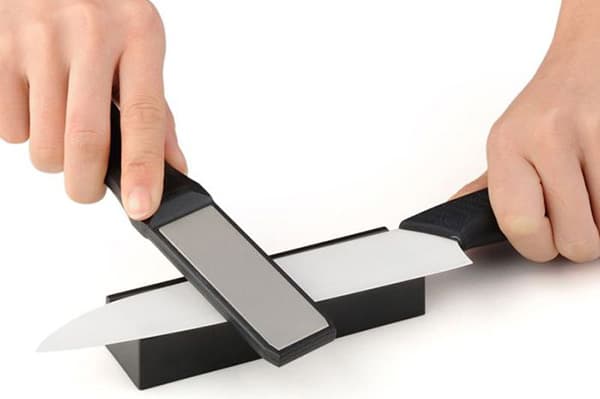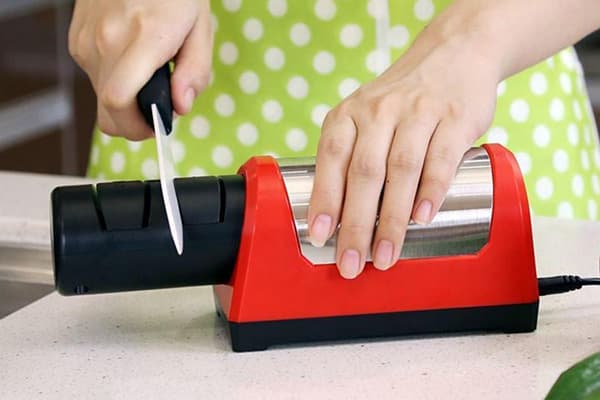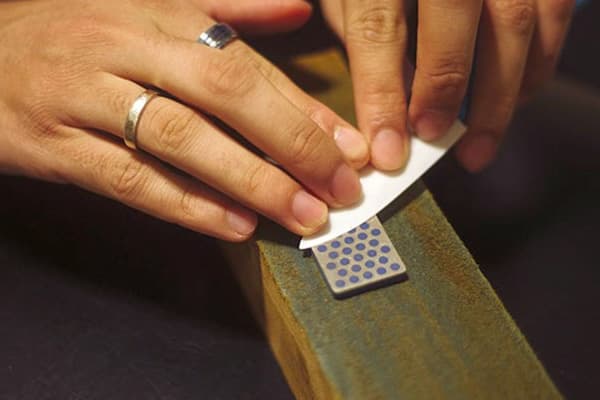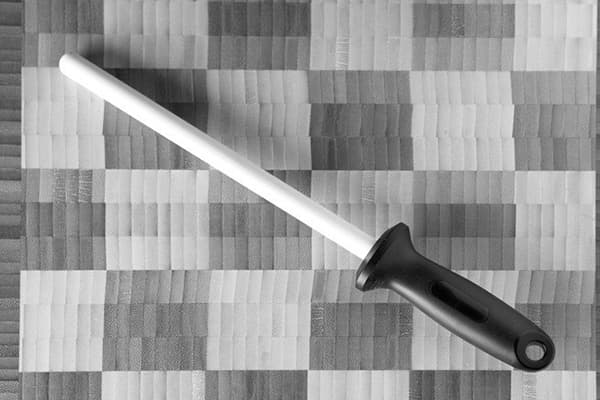How to sharpen a ceramic knife at home?
Ceramic knives are not the cheapest pleasure, and they last less than usual, but despite this, they are gaining popularity among consumers. After all, the cost of purchasing them is more than compensated by the ease of use and quality of cutting. Among other things, their design compares favorably with ordinary ones. However, these are still knives, and therefore sooner or later they also become dull. How can you sharpen a ceramic knife at home without ruining the blade?
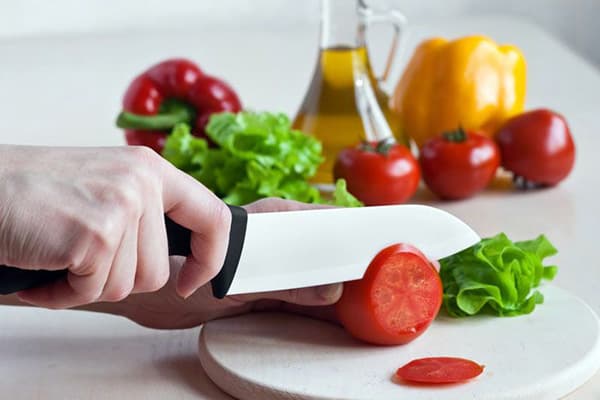
Pros and cons of ceramic blades
This essential kitchen tool is highly valued not only by housewives, but also by professional chefs, because it has many undeniable advantages over the usual metal ones:
- Increased hygienic properties. Ceramics does not absorb odors and, accordingly, does not transfer them to products during subsequent work. It does not oxidize, meaning there are no problems with rust or metallic taste in food.
- Cutting quality. The ceramic tool, thanks to its impeccable sharpness, makes it possible to accurately cut food into the thinnest slices, without crumbling bread or crushing the pulp of fruits or vegetables.
- Increased lightness. This quality is all the more important the more often and intensively you have to use the knife.
- Long sharpness. High-quality ceramics require sharpening much less often than metal.With proper use, ceramic knives need to be sharpened quite rarely, and accordingly, their service life will not be further reduced.
- The knife has an attractive design, maintaining its original appearance for a long time.
However, the main quality of ceramics - increased density - also gives rise to the main disadvantages of the knife:
- It is not at all elastic, that is, if dropped or hit, it easily chips and can even break.
- Breakage can be caused by an attempt to cut something hard with such a tool: unfrozen food, bones from meat or fish, nuts.
- Due to the fragility of a ceramic knife, it is not recommended to use it on a very hard cutting board (for example, glass).
If you have recently bought such a knife, work with it extremely carefully and carefully: its lightness and “toy” appearance removes the feeling of danger, which is why some housewives, having lost their vigilance, are easily injured by an extremely sharp edge.
How can you sharpen ceramic knives?
Any material can be processed with a tool made from a material with a higher hardness. As you know, ceramics have much greater hardness than ordinary steel. Accordingly, it is simply impossible to sharpen any ceramic knife with any tools or devices for sharpening metal blades. For this purpose, you need to use only special devices made of diamond-coated materials. It can be:
- Sharpeners for ceramics (conventional mechanical or electrical), which can adjust the angle of treatment, as well as ensure that the sharpening line matches the slightest fluctuations in thickness along the length of the blade (and ceramic blades always have them) by maintaining the same distance between the sharpening discs. It is important to remember that a ceramic knife is most often sharpened on only one side, and much less often on both sides. Therefore, when choosing a sharpening device, it is necessary to proceed, first of all, from the method of sharpening the blade it is intended for. At the same time, some (very expensive) models are produced that allow you to sharpen ceramics using both methods.
- Universal sharpening machines - provided that the simple grinding wheel is replaced with a diamond one (or rather, at least two - with different grain sizes).
- Sharpening stones (whisks). This option requires increased painstakingness, since the pressure force, work speed, and sharpening angle have to be determined and controlled “by eye.”
- Musaty - tools that resemble files in appearance and operating principle. Musats are used for light sharpening when the knife is still slightly dull, as well as for final “refinement” of the blade after the main sharpening in order to remove nicks.
- Paste. It is also designed for easy blade refurbishment or final polishing.
Purchase accessories for sharpening ceramic knives along with the knife itself, even if you don’t have to sharpen it soon.
The procedure for sharpening ceramics requires good skill, otherwise there is a high risk of thinning the blade, or even “rewarding” it with chips. Therefore, if you have doubts about your own competence, it would be better to take the ceramic product to a workshop.
What's special about sharpening ceramic blades?
The first and main feature is time. Ceramics take much longer to sharpen than steel, because due to its fragility it requires delicate, even pressure. This is absolutely true for any sharpening method. The following are the features of the different methods.
- Sharpeners.
Electric sharpeners can do the job faster and better, since the disks in them rotate themselves, providing sharpening at one angle (fixed or adjustable). The user only needs to move the blade slowly - from the handle to the tip. Good sharpeners are equipped with cells for sharpening, finishing and final polishing. In mechanical sharpening, sharpening occurs only due to the friction of the knife on the discs created by the human hand, so it takes even longer.
- Sharpening machines.
If your household has a regular sharpening machine, it is quite suitable for sharpening ceramics. But, as already mentioned, there is one obligatory condition: you need to acquire at least two diamond discs with different grain sizes: the coarser one for sharpening, the finer one for grinding.
To sharpen ceramic knives at home, be sure to set the machine to the lowest speed. To maintain the same angle, you will have to install an appropriate locking device. It is important that during operation the knife blade is pressed tightly against the disk without coming off until the end of the process. Otherwise, micro-impacts from each contact of the blade with the disc can damage it.
- Sharpening stones.
This is the most labor-intensive and unreliable method in terms of results.When using such a block, the result depends only on the person: his ability to hold the blade at one angle (you need to sharpen by moving the blade along the stone, and not vice versa!), in one direction, with the same pressing force, performing smooth, uniform, continuous movements. Therefore, before starting work, it will be useful to study the issue itself how to sharpen a knife with a whetstone.
Before sharpening a ceramic blade with a diamond stone, the sharpening tool itself should be soaked in cold water for 10–30 minutes. Directly during the process of working with ceramics, it is also periodically moistened. From the handle to the tip of the blade (that is, only in one direction!) the knife must be passed over the stone many times until uniform burrs are formed, which are ground off by turning the blade on the other side.
If the knife is double-sided, the procedure is repeated from each edge in turn until the same burrs are formed.
The final sharpness is achieved by grinding with a finer grit stone, musat or diamond grinding paste.
- Musat and grinding paste.
They are used when you only need to sharpen the knife slightly, and also to give an already sharpened knife the final sharpness and smoothness. The difference between these methods is that the knife is not moved over the tool, but, on the contrary, the tool (or a grinding device made of rough leather) is moved over the knife. Only a layer of paste is applied to the blade - in the second case.
So, for sharpening ceramic knives yourself, there are several options that differ in a greater or lesser risk of damaging the blade. But since ceramics is a very capricious and demanding material, if you have the slightest doubt about your own competence, it is better to spend money on a workshop than on a new knife.
And so that it does not become dull longer, it is extremely important to follow the recommendations for use, care and storage, which are given in the instructions for the instrument.
